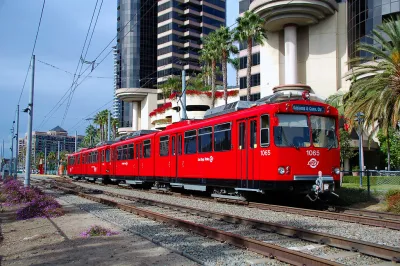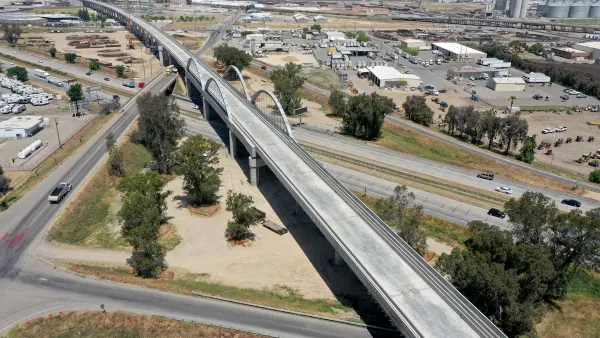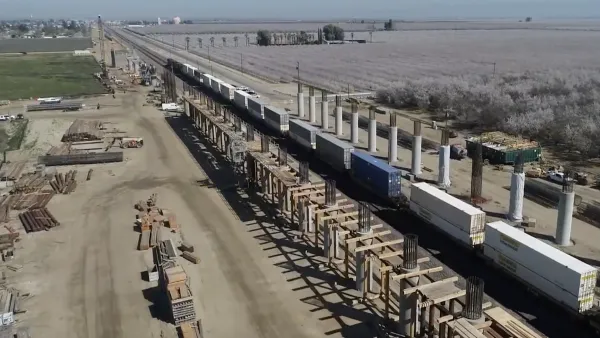Experts attribute the high cost of the project to local opposition and call on state and federal leaders to give transportation agencies more authority over local jurisdictions.

A report from UC Berkeley found that San Diego's Blue Line trolley extension cost double the per-mile average for similar projects, but was completed in half the average time. Joshua Emerson Smith outlines the findings of the study, which also analyzed four other rail projects in the state.
Ethan Elkind, co-author of the report, says the high cost of the San Diego project is indicative of the many challenges faced by rail initiatives in places like California. According to Elkind, the project was "well executed," but remains a "cautionary tale." The San Diego Association of Governments (SANDAG) worked with local stakeholders to reduce opposition and mitigate community concerns, raising the cost of the project by promising new parking spaces in certain areas and elevating the trolley tracks on the UC San Diego campus.
The report recommends that state and federal leaders "crack down" on local opposition to rail projects, with Elkind arguing that "we need to empower transit leaders to make decisions for the good of the region and not always give in to local demands along the route." But agency leaders like SANDAG Executive Director Hasan Ikhrata are reluctant to take an aggressive approach or take away local land use authority.
Other California rail projects have shown varied results: while San Francisco's Central Subway project has encountered major delays and cost increases, L.A.'s Purple Line extension is costing 70 percent of the national average. The report calls the state's beleaguered high-speed rail project "a case study in how not to build rail," citing the project's lack of foresight in securing land acquisition before designing routes.
FULL STORY: San Diego’s Blue Line trolley extension cost twice U.S. average for light rail, study finds

Analysis: Cybertruck Fatality Rate Far Exceeds That of Ford Pinto
The Tesla Cybertruck was recalled seven times last year.

National Parks Layoffs Will Cause Communities to Lose Billions
Thousands of essential park workers were laid off this week, just before the busy spring break season.

Retro-silient?: America’s First “Eco-burb,” The Woodlands Turns 50
A master-planned community north of Houston offers lessons on green infrastructure and resilient design, but falls short of its founder’s lofty affordability and walkability goals.

Test News Post 1
This is a summary

Analysis: Cybertruck Fatality Rate Far Exceeds That of Ford Pinto
The Tesla Cybertruck was recalled seven times last year.

Test News Headline 46
Test for the image on the front page.
Urban Design for Planners 1: Software Tools
This six-course series explores essential urban design concepts using open source software and equips planners with the tools they need to participate fully in the urban design process.
Planning for Universal Design
Learn the tools for implementing Universal Design in planning regulations.
EMC Planning Group, Inc.
Planetizen
Planetizen
Mpact (formerly Rail~Volution)
Great Falls Development Authority, Inc.
HUDs Office of Policy Development and Research
NYU Wagner Graduate School of Public Service




























